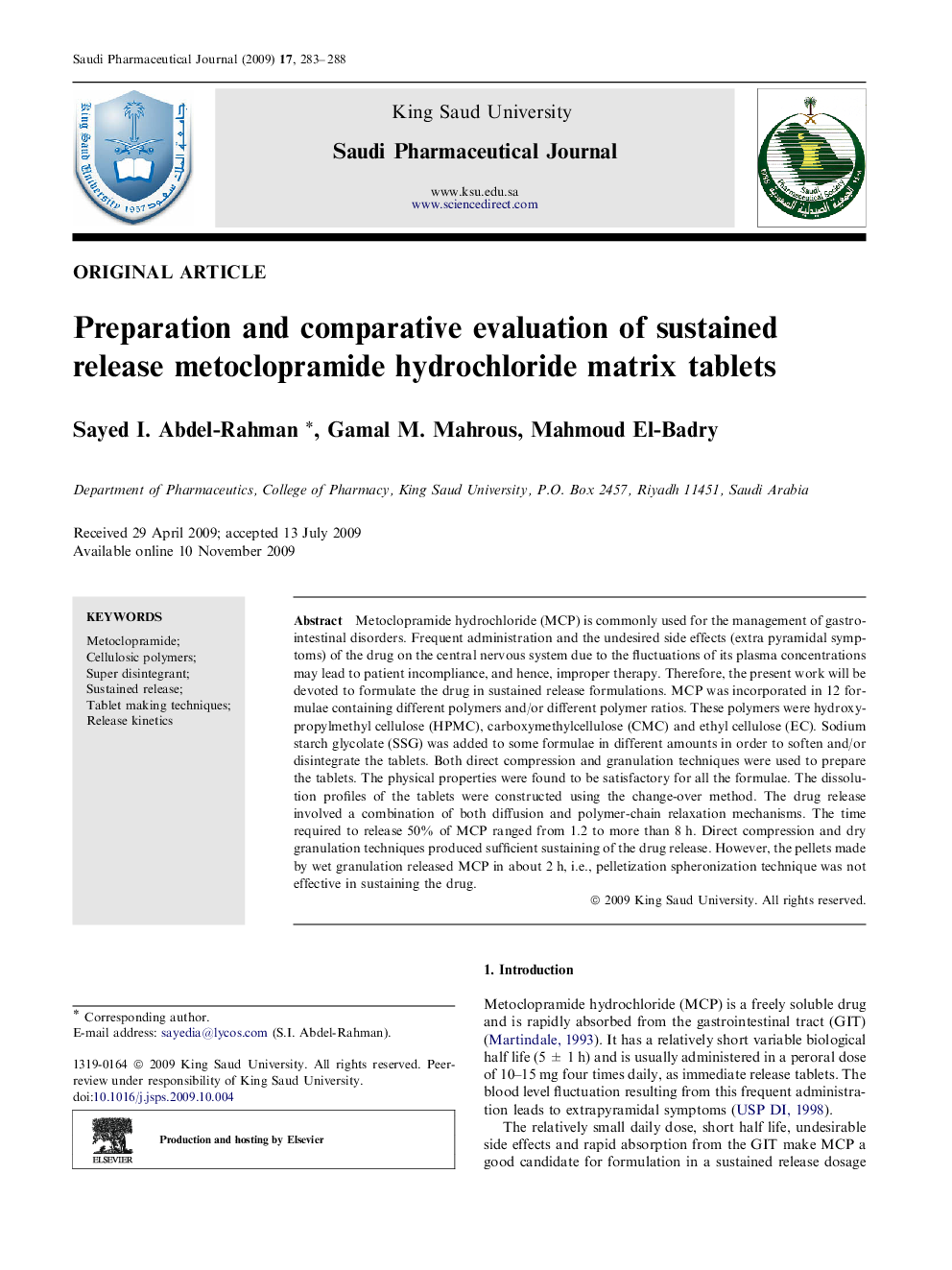| Article ID | Journal | Published Year | Pages | File Type |
|---|---|---|---|---|
| 2509739 | Saudi Pharmaceutical Journal | 2009 | 6 Pages |
Metoclopramide hydrochloride (MCP) is commonly used for the management of gastrointestinal disorders. Frequent administration and the undesired side effects (extra pyramidal symptoms) of the drug on the central nervous system due to the fluctuations of its plasma concentrations may lead to patient incompliance, and hence, improper therapy. Therefore, the present work will be devoted to formulate the drug in sustained release formulations. MCP was incorporated in 12 formulae containing different polymers and/or different polymer ratios. These polymers were hydroxypropylmethyl cellulose (HPMC), carboxymethylcellulose (CMC) and ethyl cellulose (EC). Sodium starch glycolate (SSG) was added to some formulae in different amounts in order to soften and/or disintegrate the tablets. Both direct compression and granulation techniques were used to prepare the tablets. The physical properties were found to be satisfactory for all the formulae. The dissolution profiles of the tablets were constructed using the change-over method. The drug release involved a combination of both diffusion and polymer-chain relaxation mechanisms. The time required to release 50% of MCP ranged from 1.2 to more than 8 h. Direct compression and dry granulation techniques produced sufficient sustaining of the drug release. However, the pellets made by wet granulation released MCP in about 2 h, i.e., pelletization spheronization technique was not effective in sustaining the drug.
